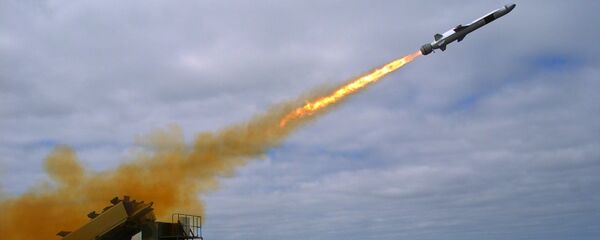The LRASM is meant to be a next-generation anti-ship missile that detects and destroys specific targets within warships while remaining far enough away to avoid engagement, a feat called "standoff engagement" in military jargon.
To accomplish this, the LRASM is equipped with a sophisticated autonomous guidance system known as a "passive sensor" that minimizes the need for intelligence, reconnaissance, and surveillance. Instead, the LRASM independently detects and homes in on enemy shipboard radar systems.
And according to a Lockheed Martin press release, USAF's tests of the LRASM over the Sea Range at Point Mugu, California were a complete success. "B-1B aircrew simultaneously launched two LRASMs against multiple maritime targets, meeting the primary test objectives, including target impact," the statement read.
"The air-launched variant provides an early operational capability for the US Navy's offensive anti-surface warfare Increment I requirement to be integrated onboard the US Air Force's B-1B in 2018 and on the US Navy's F/A-18E/F in 2019."
The subsonic LRASM has a range of 200 miles and carries a half-ton penetration and fragmentation warhead. The Pentagon and Lockheed Martin began a joint research venture into them in 2009 and the contract was formally inked in July 2017.
David Helsel, Lockheed Martin's LRASM program director, added to the statement by aggrandizing the program he oversaw. "This continued success with LRASM provides confidence in its upcoming early operational capability milestone, putting a proven, unmatched munition into the US Navy and US Air Force inventories."
The LRASM is a part of the US Navy's "Distributed Lethality" operational concept, meant to provide US forces with a missile for every occasion. The LRASM is the missing piece of the puzzle, meant to complement two other anti-ship missiles: the RGM-84D Harpoon Block 1C, an "over-the-horizon" missile with a range of 77 miles, and the Kongsberg Naval Strike Missile, a stealth missile specialized to attack near-shore targets.
The Harpoon has been the US military's anti-ship missile of choice since 1977, but the rapid modernization of the Chinese Navy has encouraged the Pentagon to seek higher tech missiles to stay competitive. The Harpoon's older radar system will usually take aim where its target was at the time of its launch instead of wherever the target might be at the current moment without outside intelligence to assist its targeting.
Lockheed is also reportedly developing a deck-mounted launcher for the LRASM so US Navy ships can also be equipped with it.
Earlier in December, Japan announced that they would be purchasing a variety of long-range missiles from Lockheed Martin, including the LRASM. Australia, Canada, Sweden and the UK have also expressed interest in the missile.







